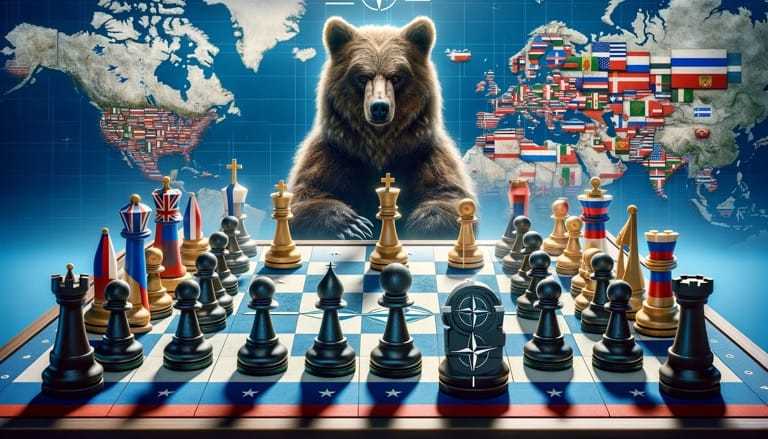NATO Prepares for Potential Conflict with Russia
In an age where geopolitical tensions are escalating, the North Atlantic Treaty Organization (NATO) stands at the forefront of defense and preparedness, particularly in the face of potential Russian aggression. On January 18, 2024, in Brussels, a joint press conference by NATO Military Committee Chairman Rob Bauer and NATO Supreme

In an age where geopolitical tensions are escalating, the North Atlantic Treaty Organization (NATO) stands at the forefront of defense and preparedness, particularly in the face of potential Russian aggression. On January 18, 2024, in Brussels, a joint press conference by NATO Military Committee Chairman Rob Bauer and NATO Supreme Allied Commander in Europe Christopher Cavoli marked a significant moment in the alliance's history. They unequivocally declared NATO's readiness to counter any potential threats from Russia.
A Defensive Stance Amidst Rising Tensions
NATO, primarily a defensive alliance, is taking proactive steps to ensure the safety and security of its member states. Bauer's statement, "We are a defensive alliance, so we must be ready, and we are," underscores the organization's commitment to maintaining peace and stability in the European region. This readiness involves improving capabilities, increasing overall preparedness, and ensuring personnel are adequately trained and equipped for various scenarios.
Scaling Up Military Exercises: Steadfast Defender 2024
In what is considered the largest exercise since the Cold War, NATO will deploy approximately 90,000 troops across Europe in a series of war games named Steadfast Defender 2024. The exercise, encompassing land, air, and sea components, aims to demonstrate the alliance's ability to rapidly mobilize and respond to threats. This large-scale deployment will include extensive participation from North American and European forces, showcasing the transatlantic bond that forms the backbone of NATO.
The Scenario: A Simulated Russian Attack
The exercises are designed to simulate a conflict scenario with a near-peer adversary, explicitly preparing for a potential Russian attack. This involves the execution of regional defense plans, which have been revamped for the first time in decades, reflecting the shifting security landscape in Europe. The drills, covering territories from the Baltics to Romania, will test NATO's capability to defend its members under Article 5 of the NATO Treaty, which dictates that an armed attack against one or more members is considered an attack against all.
Enhancing Readiness: The Role of Technology and Intelligence
NATO is not just focusing on troop numbers and traditional warfare techniques. There's a significant emphasis on integrating advanced technology and intelligence capabilities into their defense strategies. This includes cyber defense, satellite communications, and reconnaissance capabilities, ensuring a multi-faceted approach to security challenges.
The Implications of NATO's Preparedness
NATO's enhanced preparedness serves as a deterrent to potential aggressors, signaling the alliance's unity and resolve. It also sends a clear message to member states and allies about NATO's commitment to collective defense. However, this escalation of military preparedness also raises concerns about the potential for increased tensions and the risk of miscalculation leading to conflict.
Conclusion: A Balancing Act Between Readiness and Diplomacy
As NATO continues to fortify its defenses against potential Russian aggression, the alliance also faces the challenge of balancing military preparedness with diplomatic efforts. Ensuring peace and stability in Europe requires not only a strong defense posture but also a commitment to dialogue and conflict resolution. As the world watches, NATO's actions in the coming months will be pivotal in shaping the future security landscape of the region.




